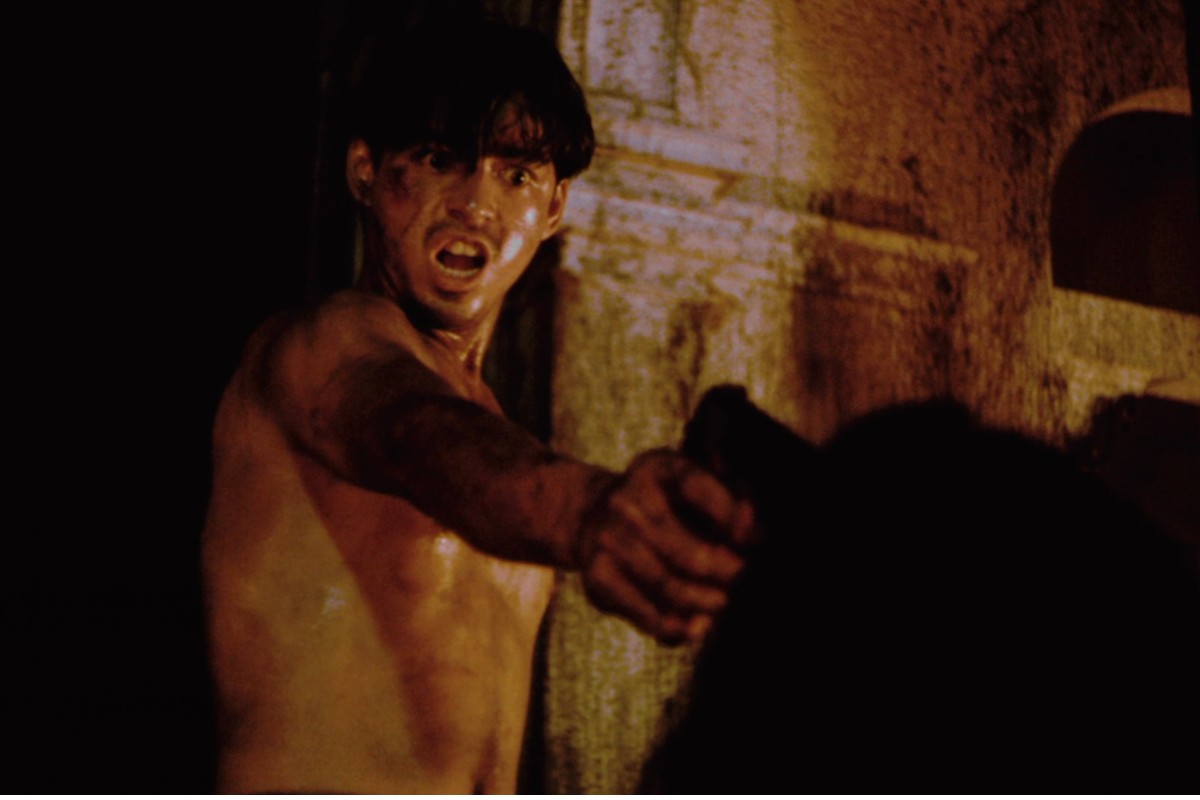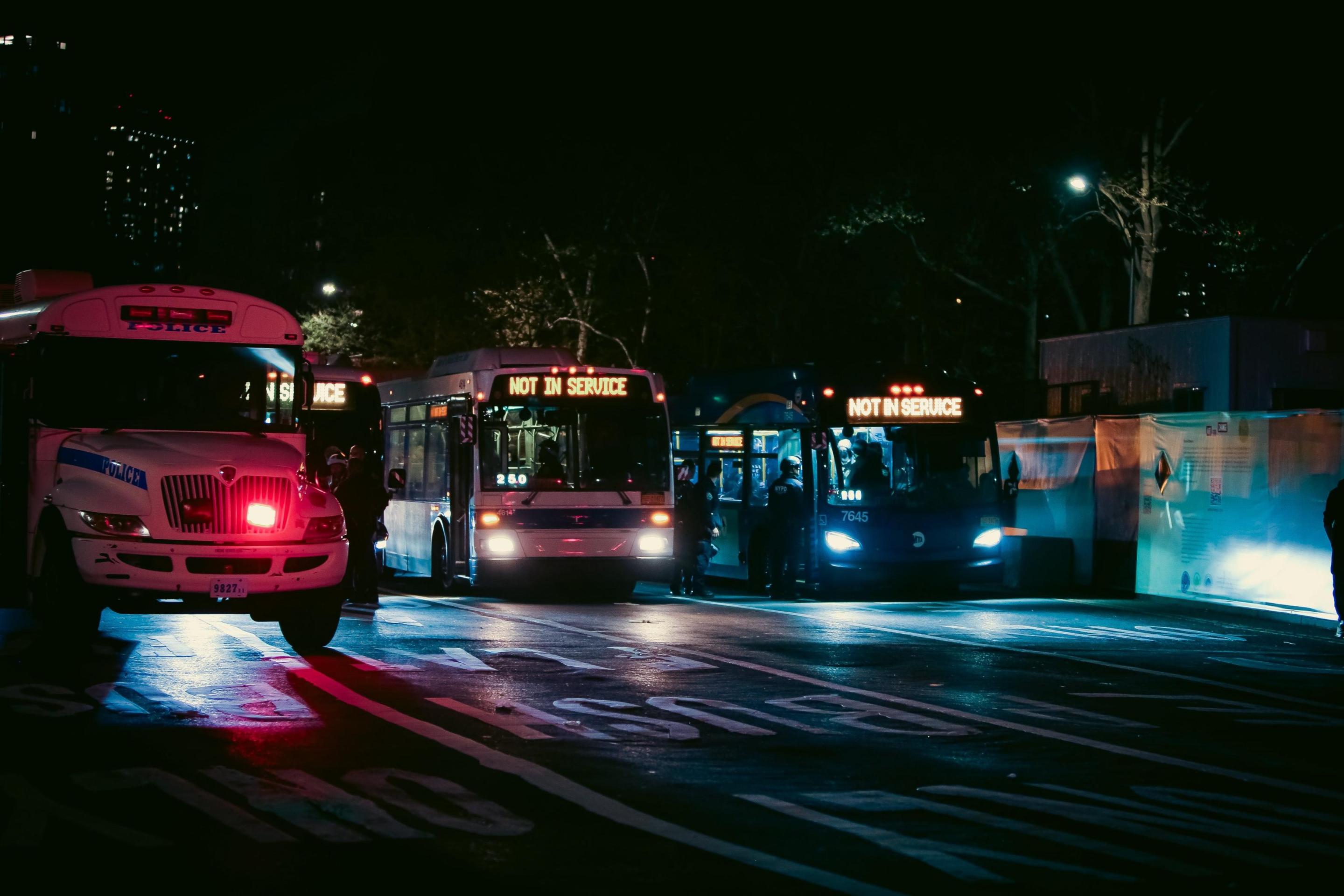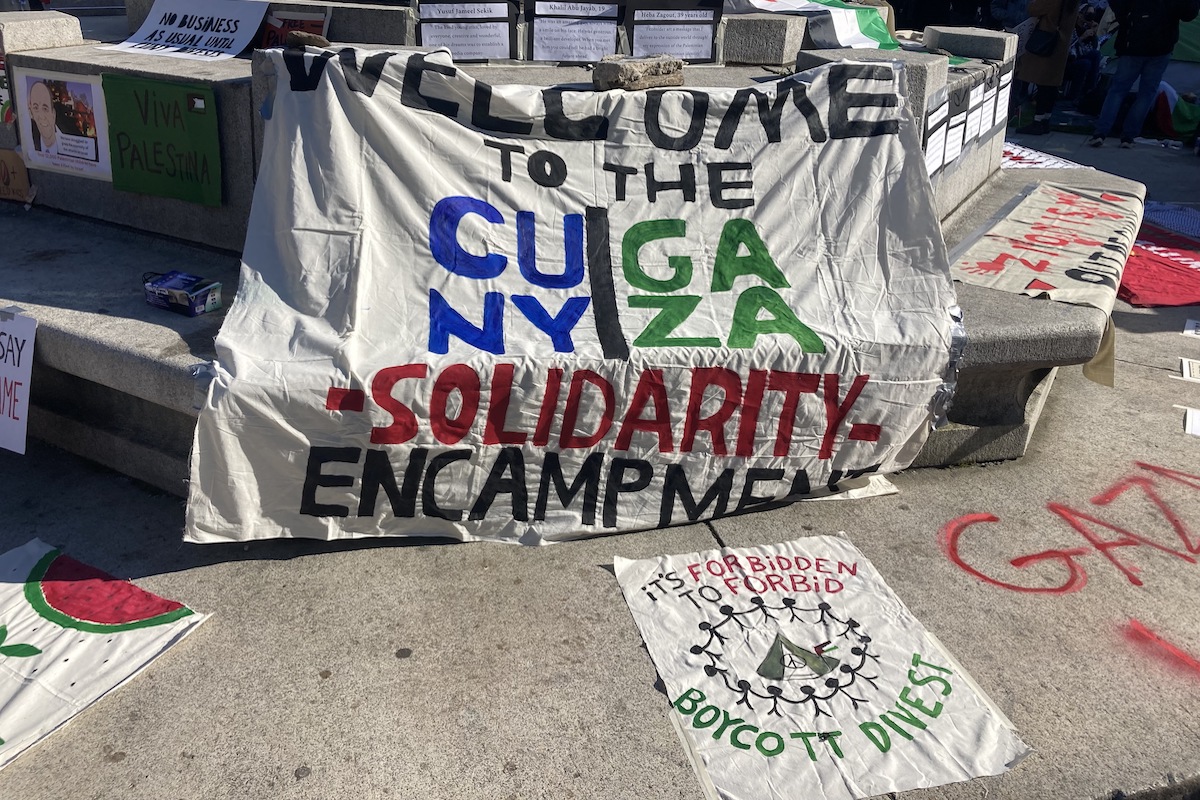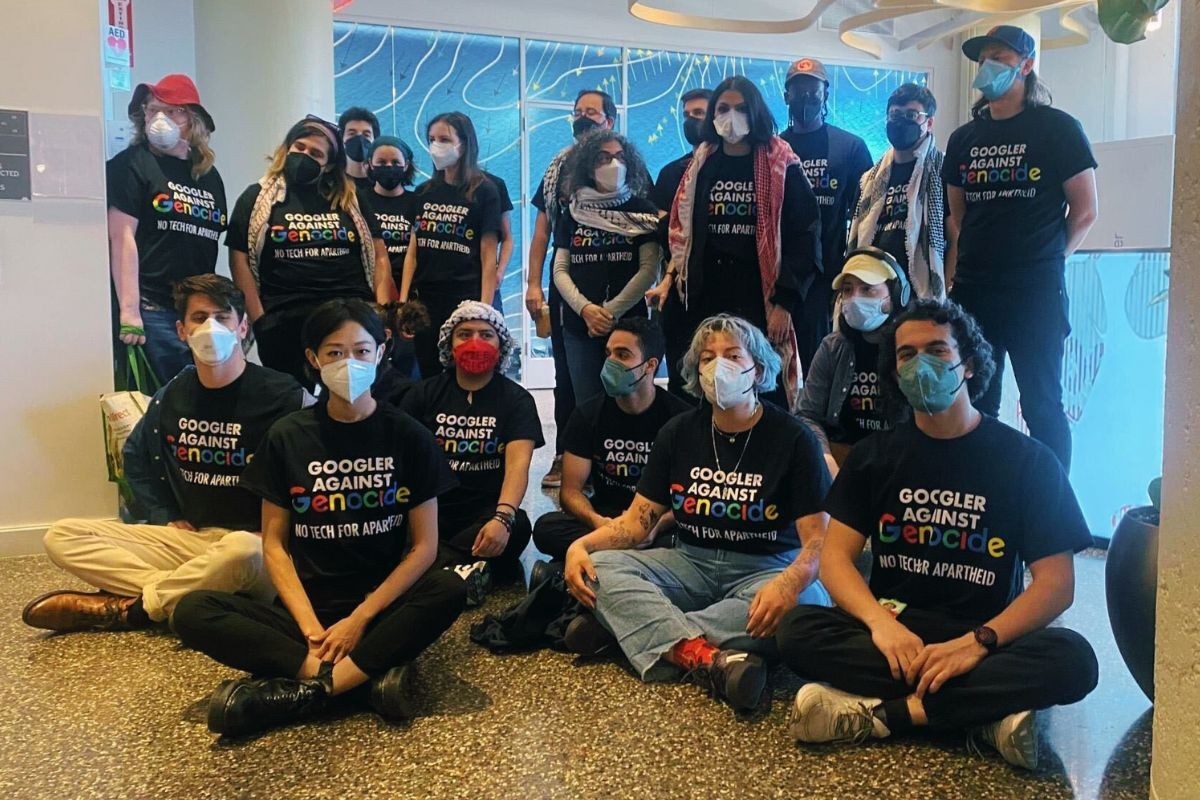How to Post Ourselves Into a Viral Crime Panic
A series of random attacks in Manhattan dozens of viral videos this week, heavy on fear-mongering.
11:55 AM EDT on March 29, 2024
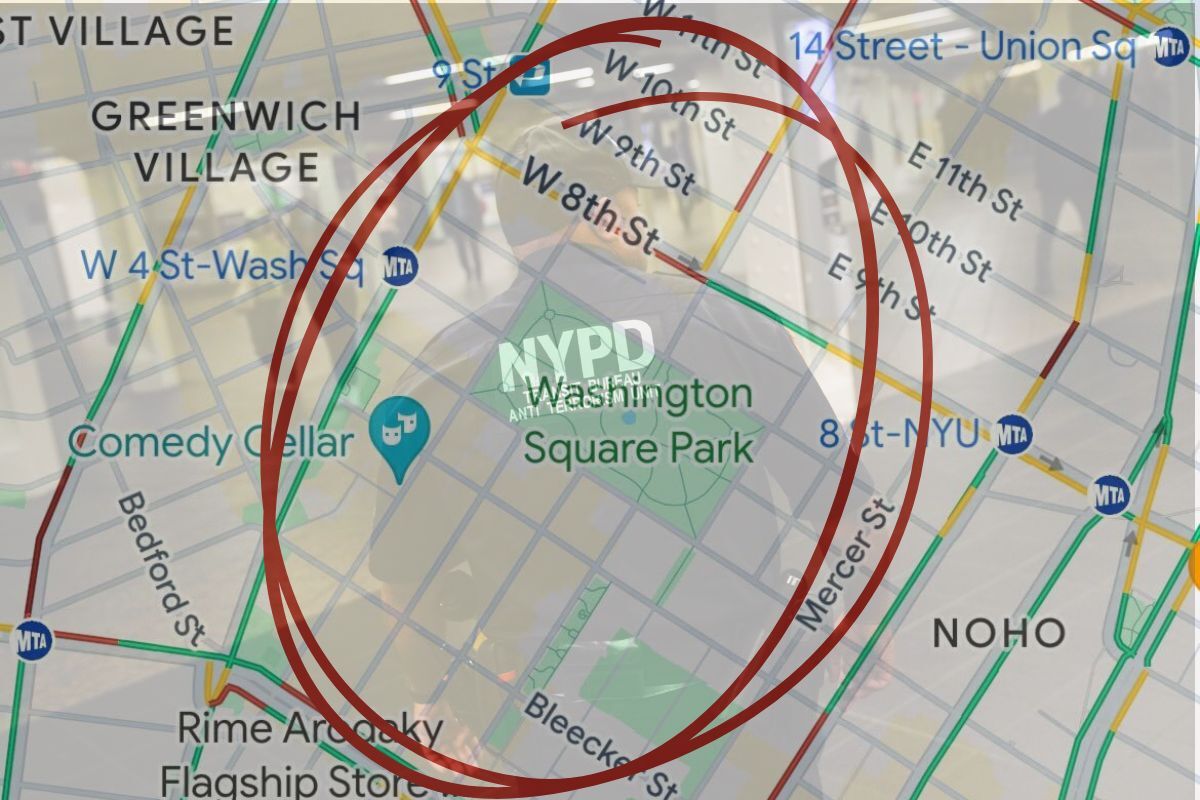
Four days ago, a New York City-based influencer named Halley Mcgookin, known as Hally Kate on social media, shared that she was punched in the head while walking down the street in the middle of the day in Downtown Manhattan. "Oh my god, it hurt so bad, I can't even talk," Mcgookin says through tears in a video that she says she filmed in the immediate aftermath of the assault, a lump visible above her brow bone. On Wednesday, a 40-year-old man named Skiboky Stora was charged with assault in connection with Mcgookin's attack—but by then, Mcgookin's initial account was just one in a chorus widely shared videos where women shared that they had recently been punched by a stranger in Manhattan, and filed their own police reports.
The virality of Mcgookin's video—the influencer had more than a million followers on TikTok before the attack, and her initial video about the attack has been viewed more than 47 million times at the time of writing—along with accounts of other attacks from this month inspired even more women to post about random acts of violence they've experienced in New York City, cementing the idea that these string of attacks could, in some way, be connected. One TikTok user took it upon herself to compile a list of 40 videos from the last few years where young women talk about getting punched in the face in New York City—an attempt to harness the power of social media to capture a full picture of the threat at hand.
News of the incidents spread quickly, from social media to media proper. The Independent, Buzzfeed, NBC News, The Cut, Time Magazine and the New York Post all published interviews with women who said they'd been attacked recently; former "Real Housewives of New York City" cast member Bethenny Frankel spawned a miniature news cycle when she shared via a TikTok comment that she'd been punched in the face on the Upper West Side a few months ago, but was too "embarrassed" to speak about the incident publicly until now. (Frankel has since deleted the comment.)
What social media really captured, however, is how easy it is for fear-driven virality to churn up a miniature crime panic. When the meaning of a handful of young women's experiences—that is, a few dozen women with TikTok accounts being attacked in a city of 8 million people over a three-year span of time—is heightened by droves of uninformed commentators spinning out over conspiracy theories and regurgitating pro-cop rhetoric to the point that real solutions to these kinds of troubling, traumatic incidents can't be discussed. Coming up with actual answers is hard; falling into a panic is easy.
As it does, the rapid spread of these videos uncorked the flow of discourse on social media—TikTok and X in particular. What began in large part as warnings from women to other women to be alert quickly morphed into something much darker, a veritable mini-crime panic. In response, women showed off pepper spray canisters and pocket tasers, and filmed themselves walking down city streets with their fists clenched and heads on a swivel in case of attack (never mind that many of the women who talked about being attacked said they were on their phones when the assaults occurred). Conspiracy theories (and, on X, plenty of racism) abounded. Were these attacks coordinated, possibly by an online community of incels targeting young women? By the government, to manufacture consent for more cops on the streets or further deployment of the National Guard? A new and improved version of the "knockout game"? Or, as one woman who said she was punched in the face in New York in 2022 theorized, a "group of homeless people who have a covenant with each other, that if they see a Caucasian girl on their phone, to punch them"? Others blamed progressive policies like bail reform for the attacks—a line of thinking familiar to anyone who's listened to New York City police union talking points in the five years since New York's new bail reform laws were enacted.
Random acts of violence like these undeniably happen in New York City—it's hard to find someone living in the city who doesn't have a story about a disturbing or threatening encounter with a stranger. That's why these videos, especially taken en masse, have the power to capture the attention of New Yorkers, even the ones who typically feel safe walking down the street and scoff at concerns from suburban relatives about living in the big, bad city.
The potential to become a victim exists, and is unavoidable, and that is inherently frightening. But how big of a threat is this kind of attack to the average young woman walking down Second Avenue on any given day? The panic induced by the flood of videos, the feeling that you could be next, obscures a bit of reality—crime rates in New York City are, as they have been for decades, relatively low. In spite of this, New Yorkers have witnessed a handful of high-profile law enforcement deployments in recent memory, including an influx of NYPD officers on the subways to curb fare evasion and National Guard members searching bags at Times Square, as our media outlets, the NYPD, and our mayor beat the drumbeat about crime, amplifying people's fears in order to push for policy that's "tough on criminals"—things like bag searches, bail reform rollbacks, AI-powered weapons scanners, and reductions in police oversight.
Even older than the narrative that crime is on the rise is the idea that random attacks like these have a distinct culprit, or a coherent motivation. Joel Best, a retired professor of sociology and criminal justice at the University of Delaware, wrote a 2018 research paper about the peak popularity of stories about the "knockout game," a supposed (and later, widely debunked) trend that involved Black teenagers roaming city streets assaulting strangers. Best told Hell Gate that besides the obvious racialized element to knockout game stories, the urban legend also captured growing anxieties about technology—specifically, the proliferation of cell phones and the idea of violence as content. "It was talked about in terms of people filming these things," Best said. "So, you'd have these images that people were saying were instances of the knockout game being played, but in some cases, these were pictures that had actually been around for a long time."
Best said that in general, news stories about crime and violence have a tendency to become fodder for broader social commentary. "We wander around in our lives with various ideas about how the world works and what's really wrong," he said. "We worry about crime, kids out of control, a conflict between the genders, technology—various things that sometimes fit into our anxieties. Then, here's a little bit of news, and that becomes a canvas. It's easy to modify, to transform it and turn it into something…Forget the idea that there's a crime happening. What you're watching, almost in real time, is people talking about the meaning of this and creating all these alternative possible meanings."
Regardless of a broader meaning, the city's institutions have taken note of the atmosphere of fear produced by these videos. Hell Gate obtained an email from New York University to its students, addressing the attacks. "The Campus Safety Department’s records do not reflect having received any direct reports of these or similar incidents involving NYU community members. We have also checked with the NYPD’s 6th Precinct, and their records also do not reflect these or similar incidents," the email reads, but still, "Given the social media posts, we recommend paying additional attention to your surroundings as you navigate the city on foot, whether it is near campus or in other neighborhoods."
The NYPD also released a statement on the attacks via X. "The NYPD is aware of a viral video circulating on social media depicting a woman who was randomly assaulted in an unprovoked attack. The individual has been arrested and charged and is a criminal recidivist with an extensive record," the statement says. It continues, "Your NYPD detectives were able to identify the man after he was previously arrested for similar attacks, only to be released back onto our streets. This incident will be his third arrest in the past six months."
It's easy enough to read the message between those lines.
Thanks for reading!
Give us your email address to keep reading two more articles for free
See all subscription optionsStay in touch
Sign up for our free newsletter
More from Hell Gate
The Coolest Movie in Theaters This Weekend is a Three-Hour Filipino Historical Epic
Peque Gallaga's war drama is vivid, violent, and anticapitalist.
NYPD Officer Learns How to Drive MTA Bus—While Transporting Arrested Protesters
"A lot of people were commenting like, oh God, I don't know if he's gonna make this turn."
NYC’s Public University Gets a Gaza Solidarity Encampment
Just north of Columbia, another encampment represents a more working-class radicalism.
Top Cop Flip Flop: Chell Now Calls Columbia Student Protesters ‘Vile’
Narratives can change a lot in a week. Plus, more links for your weekend.
A Fired Google Engineer on Protesting the Company’s ‘Terrible Path in Their Pursuit of Money at the Expense of Human Life’
Zelda is part of a group of workers fired after participating in last week's No Tech for Apartheid demonstration.
